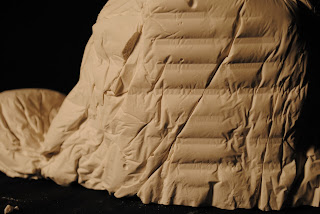1. How does Peter Zumthor talk about the "Magic of the Real" and explain how this compares, in terms of the subtleties, to Michael Benedikt's "Architecture for Reality"?
Zumthor's "Magic of the Real" looks to forge an atmosphere out of the space that physically embodies different feelings by using sensory measures. Michael Benedikts "Architecture of Reality" focuses more on ways that the architecture can affect us on a personal level. Instead of creating a space that IS something, he creates a space that makes you feel something.
2. Material Compatibility, Temperature of a Space and Levels of Intimacy are some conditions that both Peter Zumthor, in “Atmospheres”, and Richard Serra, in “Weight and Measure”, make a point of articulating when consider space. Where in their explanation of these overlapping conditions are they similar and where do they differ?
Material Compatibility -
To Zumthor, the combinations of "compatible material" is essentially endless. By employing the different materials in different manners and establishing different relationships between them, he finds that you have no limits on what you can do. Serra is very careful about his use of materials, he wants to convey a particular feeling with out making use of symbology that may affect how on interprets his work.
Temperature of a Space -
Zumthor believes that the thermal properties of different physical materials can have a lot of gravity on how a space is interpreted. Wood for example feels much warmer to the touch than steel, while the only reason for this is the fact that metal conducts heat better, Zumthor still believes that wood "warms" the atmosphere of a space. Warming to the experience, rather than literally.
3. Zumthor looks towards experiential conditions when creating architecture, what are other methods architects use when generating architecture and what is the corresponding building?
More traditional architecture was built on program. Architecture was usually built in the same manner, using the same proportions, similar floorplans, and very little differentiation.
4. For Zumthor at the end of the day, after figuring use, sound, place, light and the other listed conditions, if the coherence isn’t beautiful the process is started again. Beauty is simultaneously subjective for the individual, as held “in the eye of the beholder”, and universally recognizable. Define your subjective understanding of what beautiful architecture is.
To me, beautiful architecture possesses special qualities that can't necessarily be pointed out. Beautiful architecture takes you beyond the physical space and leaves you questioning what these hidden qualities are. Beautiful architecture has inherent characteristics that puzzles whomever is experiencing it, but in a mystical intriguing way.
















